The Judean Desert Israel
Explore the Beauty of this Barren Wilderness and Ancient Place of Refuge
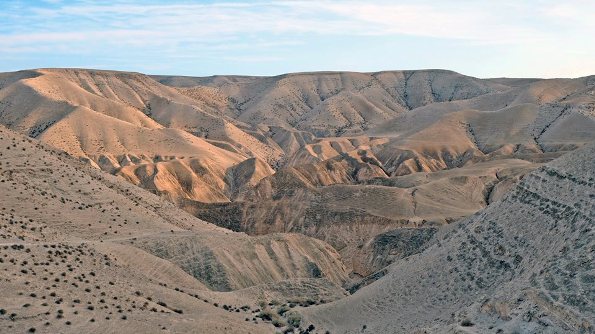
You may need to clear your ears as you drive down the Judean Desert Israel, rapidly descending 1,200 meters (nearly 4,000 feet) from the heights of Jerusalem down to the Dead Sea, the lowest place on earth.
The ride may be steep, but the desolate beauty of the Judean Desert is breathtaking.
You can drive down yourself, join an organized Judean Desert tour,
or book on of our private tours of the desert in Israel.
What to See in the Judean Desert Israel
Called 'Midbar Yehuda' in Hebrew, the Judean Desert is home to some of the most remarkable Israel sightseeing attractions:
Dead Sea and Judean Desert Israel Map
Use the Judean Desert and Dead Sea Map below to help you plan your trip:
Judean Desert Israel
The Dead Sea - The Lowest Place on Earth!
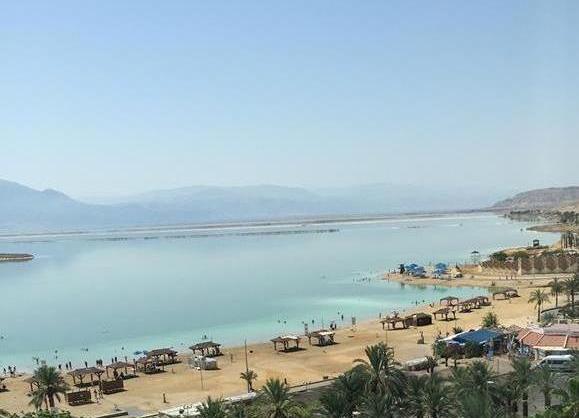
The Dead Sea is the lowest inhabitable place on this planet, at 430 meters below sea level.
Read more about the incredible Dead Sea facts and history.
It's actually not a sea at all, but a huge salt lake with a concentration of 34% salt. That's ten times more concentrated the seas and oceans. And its the salt that makes floating on the Dead Sea so unique!
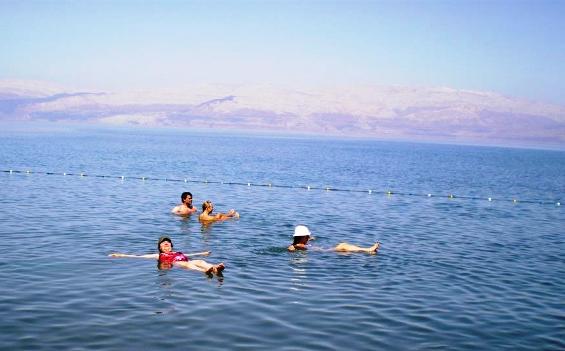
It is sunny in the Judean Desert almost all year long.
Believe it or not, it is safer to sunbathe near the Dead Sea than in any other place in the world! That's because the Dead Sea area is so low. it is further away from the sun, so the atmospheric layer is thicker and provides extra protection from ultraviolet rays.
You can spend time on one of the beautiful Dead Sea public beaches, float in the water, or enjoy a famous Dead Sea mud bath.
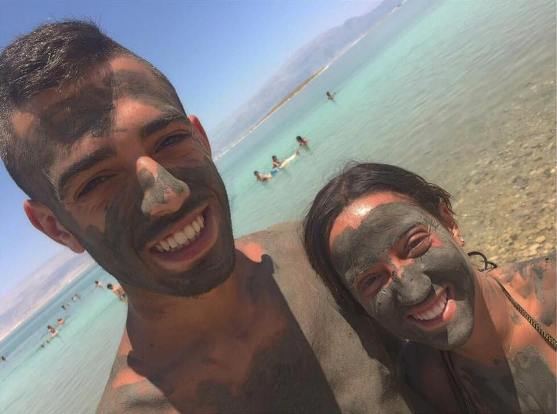
There are a few beautiful beaches along the Dead Sea.
There are three beaches on the northern tip of the Dead Sea near each other which are all beautiful, in a rough, natural way: Neve Midbar Beach, Biankini Beach and Kalia Beach.
There is the Ein Gedi beach near the Ein Gedi Nature Reserve.
We like best Ein Bokek beach in the south of the Dead Sea and have chosen it as one of the top ten beaches in all of Israel. It is open to the public and well tended.
The area is home to many health spas, most of which are located in the numerous hotels in this part of the Dead Sea. You can enjoy mineral baths, swimming pools, saunas, Dead Sea mud wraps, massages and health and beauty treatments.
There are lovely views as you drive along the Dead Sea.
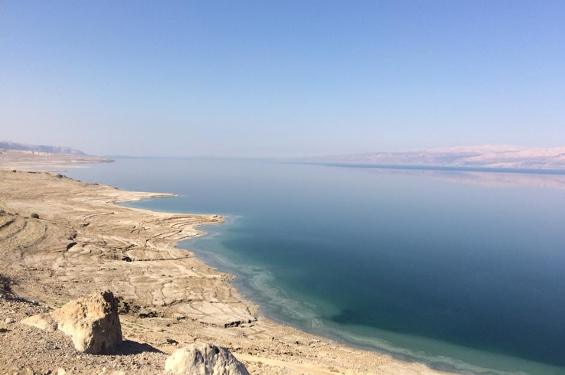
Just be careful not to step our of your car in unmarked beach areas, because there are more and more sinkholes along the Dead Sea. Don't just stop along any unmarked beach. Best you stick to the declared beaches we listed above.
Judean Desert Israel
Qumran Caves and the Discovery of the Dead Sea Scrolls
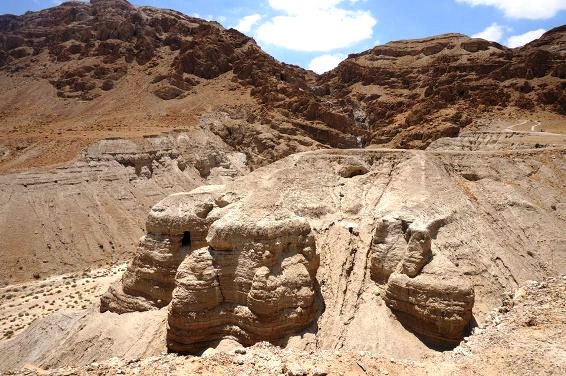
In 1947, a few young Bedouin shepherds discovered seven clay jars in Qumran Caves near the Dead Sea. What was in the jars was an earth shattering discovery.
The jars contained the oldest parchments of the Bible dating 2,000 years ago. Until that date, the earliest Biblical writings were from a thousand years later.
More parchments continue to be discovered in nearby caves. All in all there are thousands of manuscripts and writings in Hebrew and Aramaic. Fragments of almost the entire Old Testament were found. Amazingly, the writings are identical or very similar to the Hebrew Bible being used today. The scrolls include biblical and non-biblical writings describing the people who lived in the caves and their customs.
So who wrote these manuscripts?
About two thousand years ago, a group of Jews called Essenes left what they believed was 'corrupt' Jerusalem. They settled in caves near the Dead Sea to live ascetic, communal lives.
The believed they were the poor people of the light, and their enemies were people of the dark. In the photo above you can see the archaeological remains of their 'mikvehs' which are ritual water baths.
Most scholars believe the Dead Sea Scrolls were writtten by the Essenes, although some scholars believe they were written by other Jewish groups or by early Christians.
You can learn more about the Dead Sea Scrolls here.
Judean Desert Israel
Ancient Monasteries for Monks and Hermits
Over the centuries, the Judean Desert in Israel has served as a place of hiding and sanctuary for rhose seeking refuge from Jerusalem. David ran away from King Saul and from Abshalom to the desert. Many Jewish and Christian sects escaped the corruption of Jerusalem to the holy desert, such as the Essenes who wrote the Dead Sea Scrolls. John the Baptist lived in the Judean Desert.
During the early Christian period, hundreds then thousands of Christian hermits chose to live in remote desert caves.
Several dozen monasteries were built around these hermit caves. One of the largest ancient monasteries that are still active is Mar Saba Monastery near Bethlehem.
Built in the 4th century, it hangs precariously on the peaks of Kidron Valley, named by Christians the Valley of Resurrection. The Kidron River starts outside the Old City of Jerusalem -
and runs through the desert until it empties into the Dead Sea.
Another spectacular monastery in the Judean Desert is St. George Monastery.
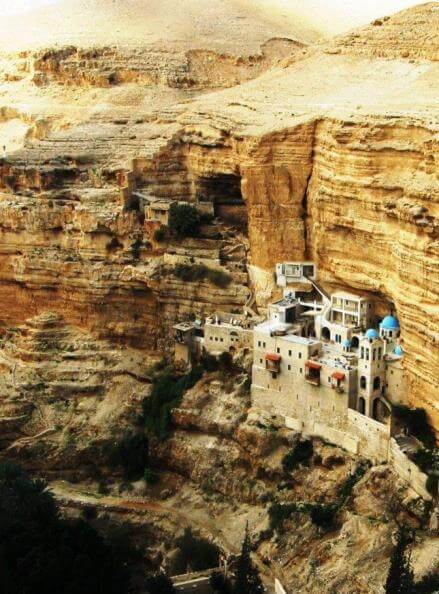
St. George Koziba Monastery seems to be engraved right into the steep rockface of the Qelt Valley cliffs between Jerusalem and Jericho.
Do take care if you choose to visit here. However lovely, this monastery is in an area that has seen hostilities. Check before you go there on your own, or we recommend that you join a private or organized tour.
Two other monasteries worth visiting on the Palestinian side of the border are:
- the Quarentel Monastery, clinging to the cliffs of Mount Temptation where Satan is said to have tried to tempt Jesus.
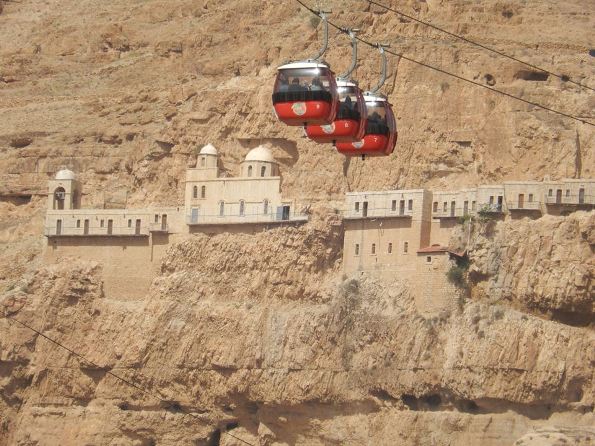
Instead of climbing, you can reach this impressive monastery in a 5 minute cable car ride from the site of ancient Jericho.
- and St. Gerasimus Monastery, also called Hajla Monastery east of Jericho, where Joseph, Mary and baby Jesus are said to have fled from King Herod.
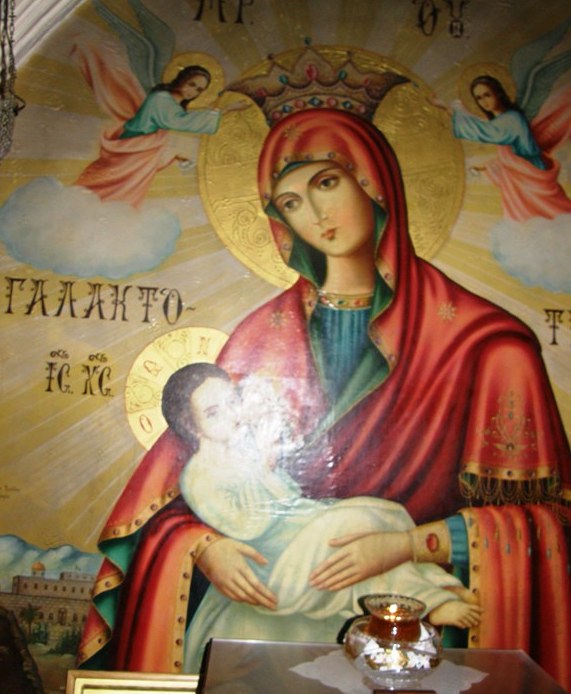
This is one of of the oldest monasteries in the Judean Desert area, built by St. Gerasimus in the 4th century. Gerasimum revolutionized monastic life by combining austere, cave life for the monks during the week, with communal meals and on weekends.
The Persians destroyed the monastery in the 7th century and the present building was built by the Crusaders.
Judean Desert Israel
Ein Gedi - Green Oasis in the Barren Desert
The most famous oasis in the Judean Desert of Israel is Ein Gedi near the northern part of the Dead Sea.
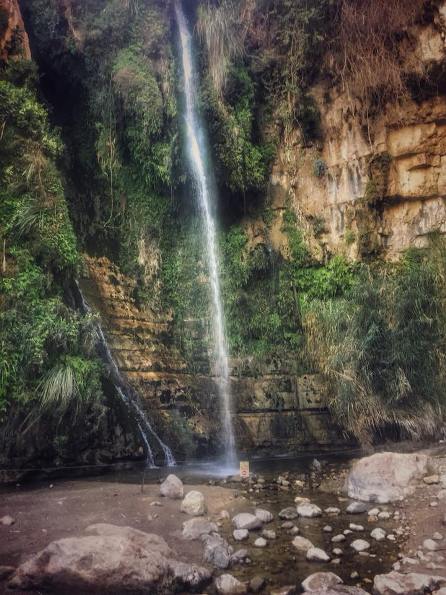
Ein Gedi is one of the most popular national parks in Israel with 4 springs in the area including David's Spring and Waterfall and Arugot Spring.
There are wonderful walking and hiking trails. The shorter ones around the David Spring are 30 - 60 minutes long. The medium length hikes near the Arugot Spring can take 3 - 4 hours.
As you walk around, there's a decent chance you might see one of the the many ibex and hyrax in the area.
For thousands of years, man has lived around the Ein Gedi water sources. You can visit archaeological remains of ancient tools used by men from 6,500 years ago.
There is an ancient pagan temple from about 5000 BC.
There is also a fascinating, ancient synagogue mosaic with an inscription that curses whoever reveals the secret of the village!
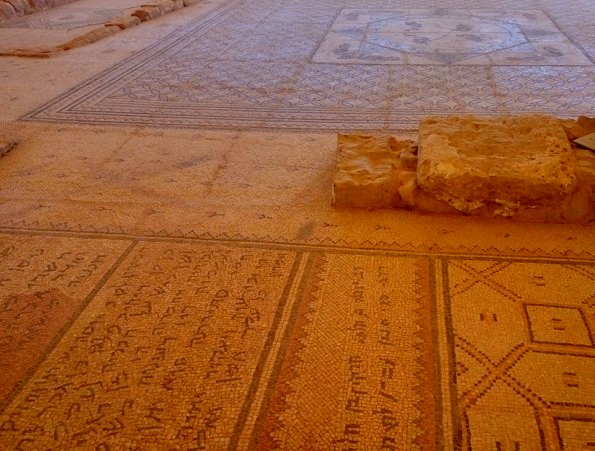
Historians believe that the inscription is referring to the secret recipe for creating the famous Biblical 'persimmon' fragrance that was extremely expensive and a leading export from the Kingdom of Judea. The fragrance was derived from a plant that only grew around Ein Gedi.
The nearby Ein Gedi Kibbutz has a comfortable hotel guesthouse in a bucolic setting, with botanical and ecological gardens and their own private, Dead Sea beaches.
Judean Desert Israel
Qasr El Yahud - Sacred Place for Christians and Jews
Qasr El Yahud is a lovely, historical and religious site located in the last streches of the Jordan River before it spills into the Dead Sea.
It is a sacred spot for both Christians and Jews.
Christians reckon it is the exact spot where John the Baptist baptised Jesus. Christians of all denominations immerse themselves for a re-baptism in the waters here, just as Jesus did. Some believe the waters have curative powers.
Jews consider Qasr el Yehud the place where the Israelites crossed over into the Land of Israel after 40 years of wandering in the desert.
It is also considered the place where the Prophet Elijah ascended in a fire chariot to heaven.
Regardless of what you believe in, its an interesting place to visit.
Judean Desert Israel
The Inn of the Good Samaritan
The Museum of the Inn of the Good Samaritan lies on the road from Jerusalem to the Dead Sea. The road follows the ancient route between Jericho and Jerusalem. During Biblical days, it was the border between the lands of two tribes of Israel, Judah to the south and Benjamin to the north.
The museum sits on the site of the Inn of the Good Samaritan which was in use for nearly 2,000 years!
The Inn was a hostel for travelers and pilgrims along this important crossroads, and was built as part of a Byzantine monastery and Church in the 6th century. The inn's name comes from the parable told by Jesus of a man who was robbed and hurt along this very road. Many people passed by but it was a good Samaritan who helped him.
The musuem contains amazing mosaic floors and collections from the region. Here is an ancient Jewish mosaic that says -
'Shalom Unto Israel' under a menorah.
And here is another mosaic -
showing David playing the harp with the word 'David'.
The museum sits in the midst of archeological excavations of ancient churches, fortresses, and dwellings covering 2,000 years of history.
There are remains from the ancient Jewish, Roman, Byzantine, Crusader and Ottoman eras. Among the remains are remnants of Herod's Palace and a Crusader fortress which was later converted to a Muslim stronghold by Saladin.
The hostel continued to function during the alternating Christian, Arab, Crusader and Ottoman periods. There are fascinating relics from the different time periods.
You may also be interested in:
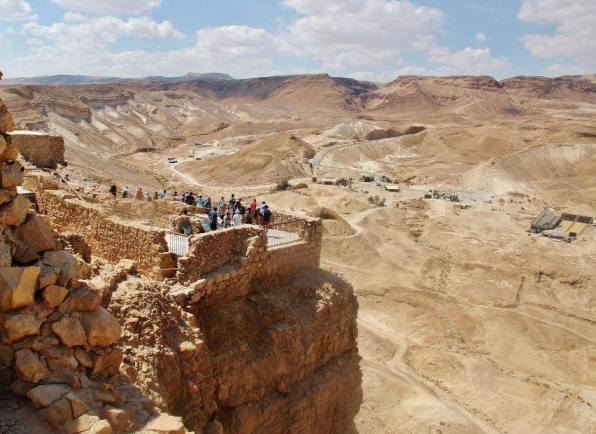
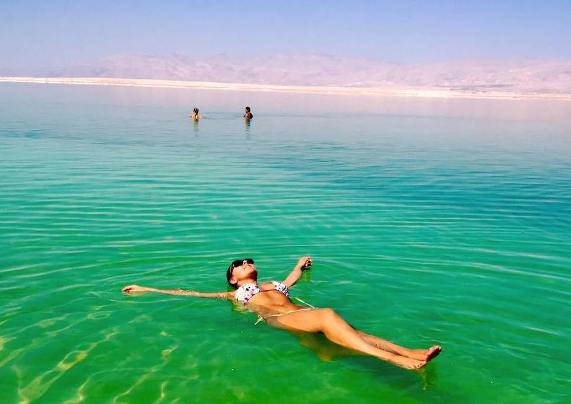

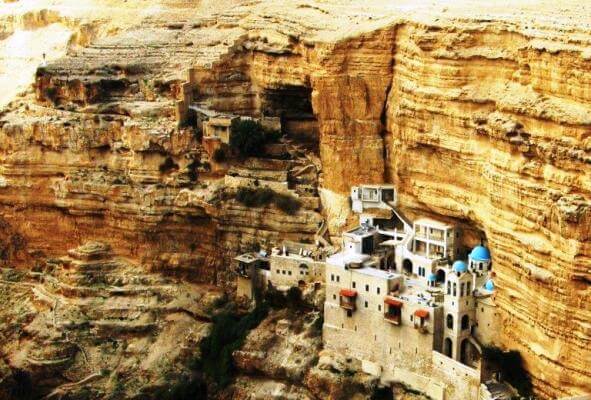
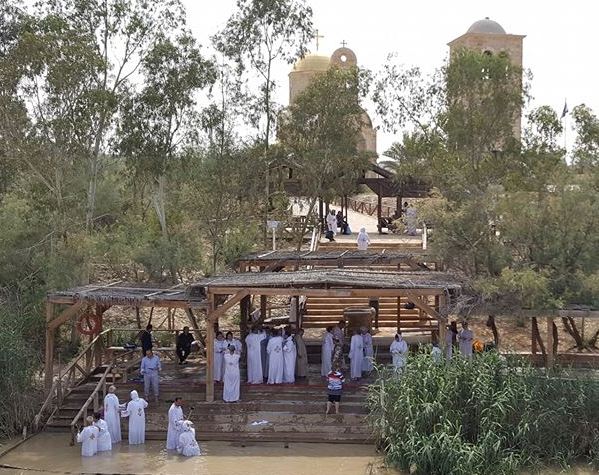
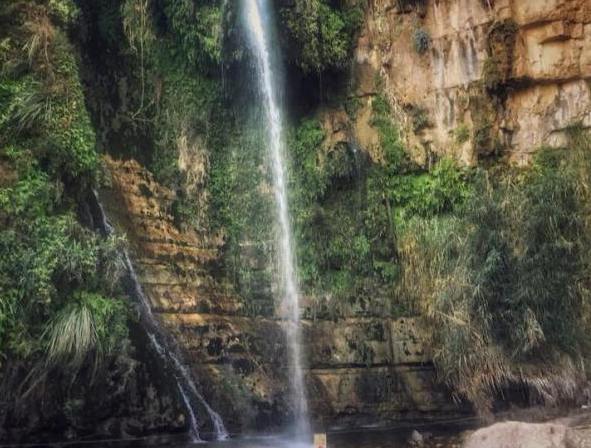
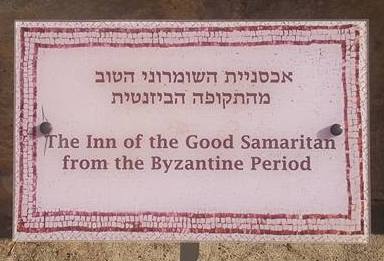
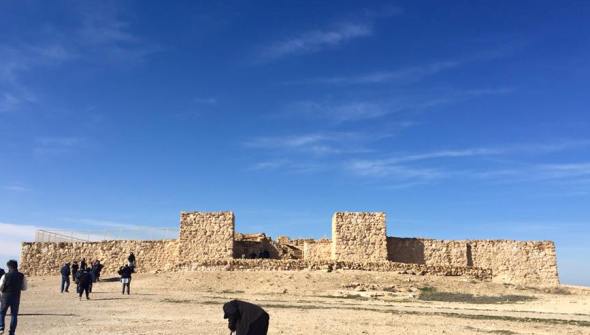
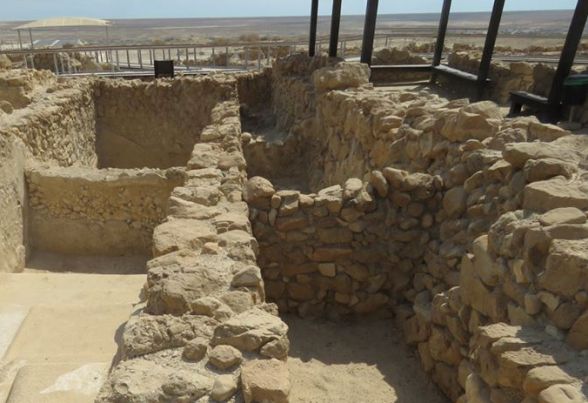
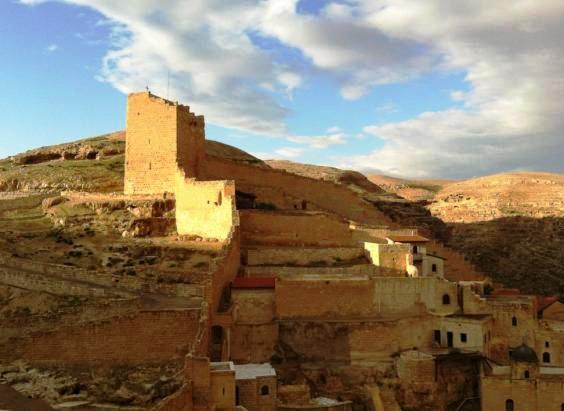
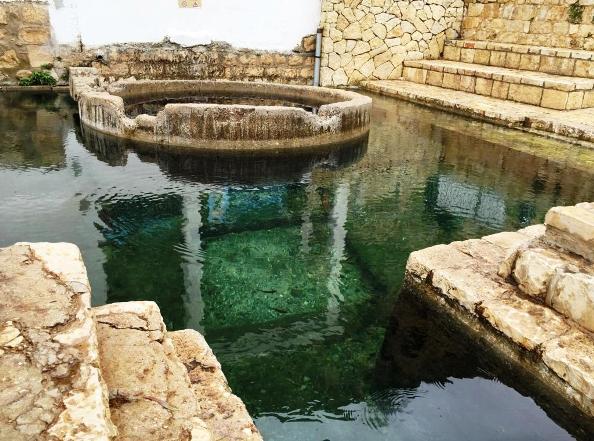
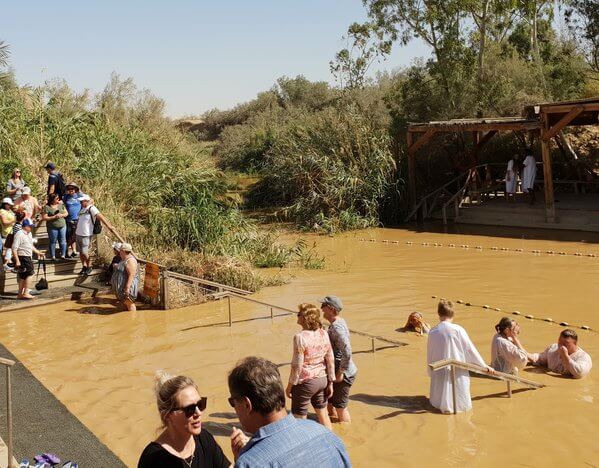
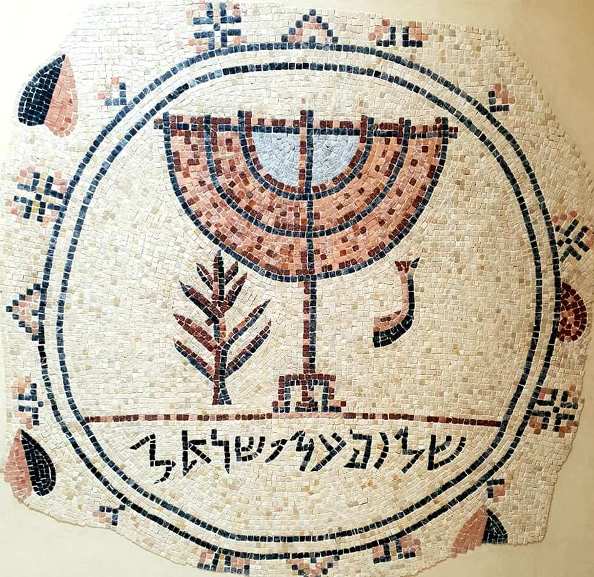
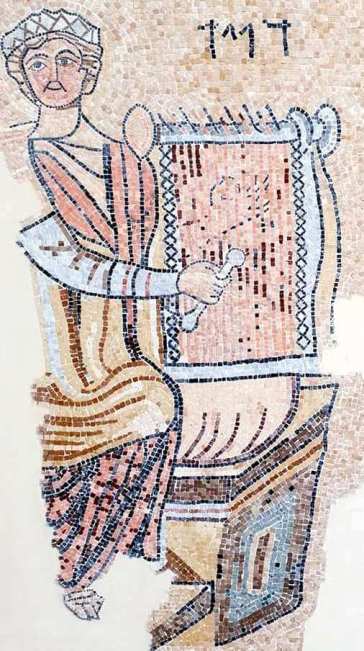
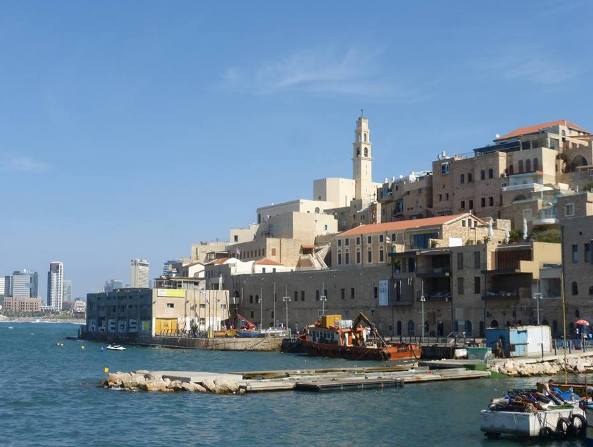
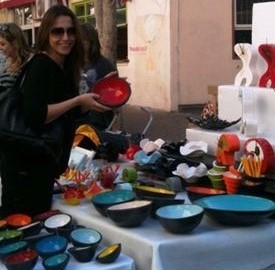
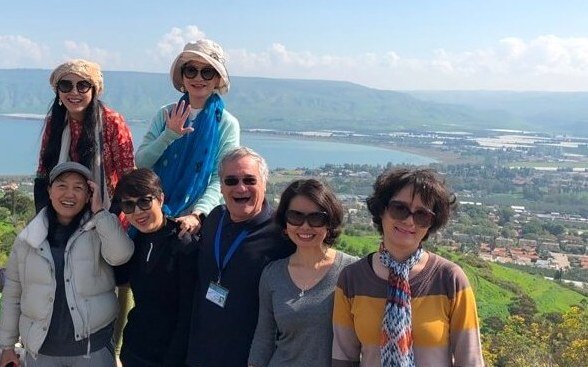
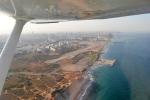
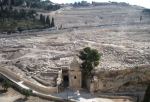
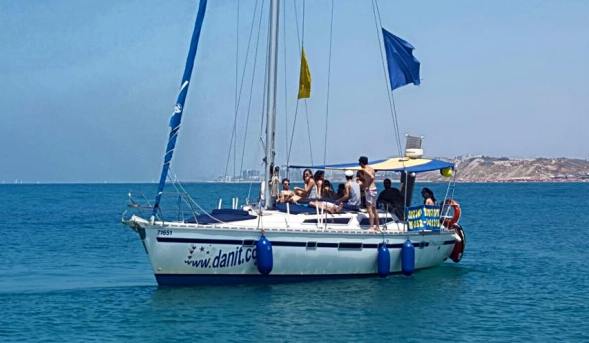
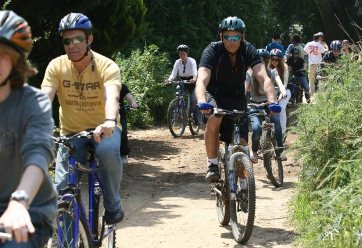
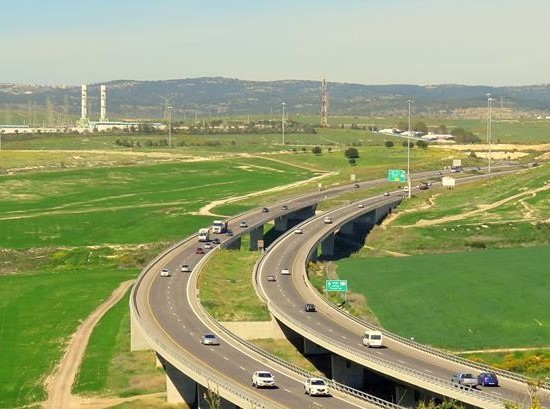
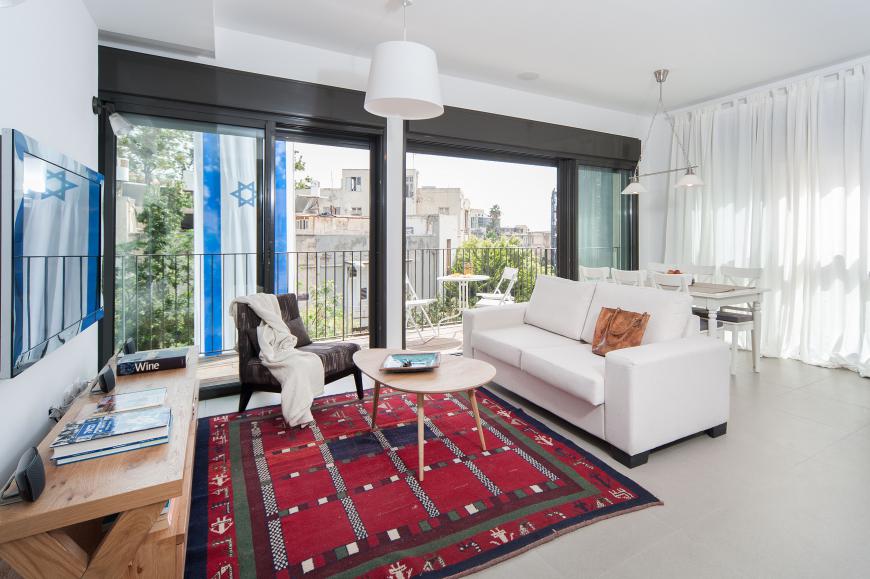
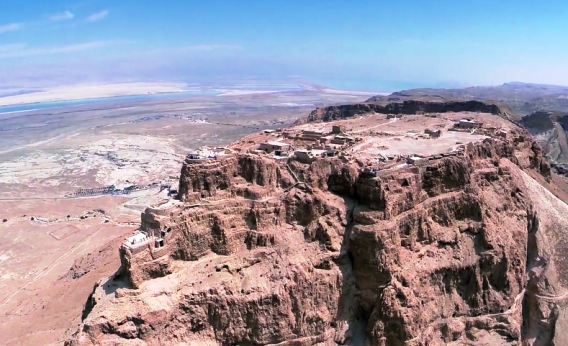
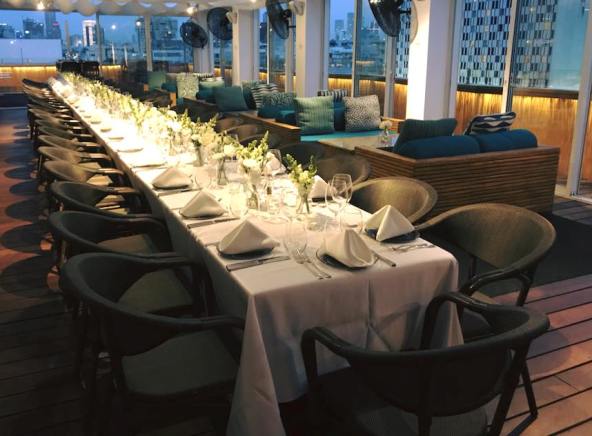
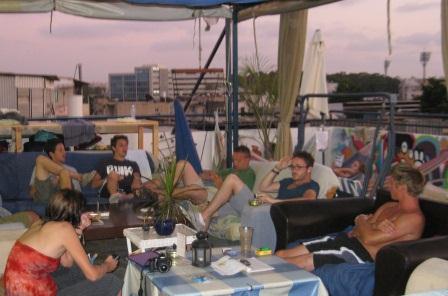
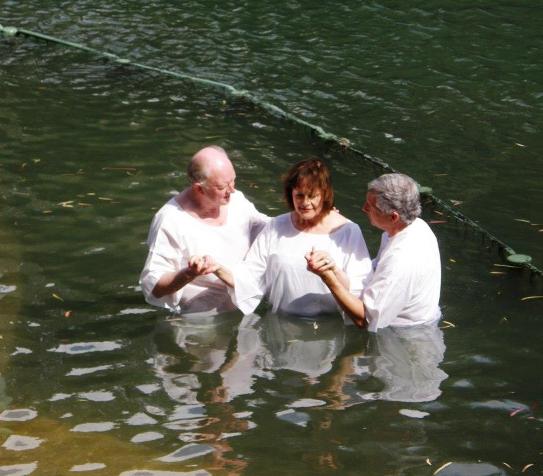
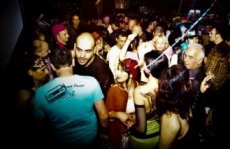
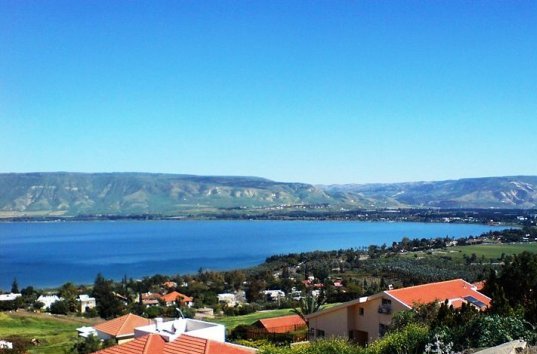
Facebook Comments
Enjoyed your visit? Have something to say? Why not leave a comment in the box below.